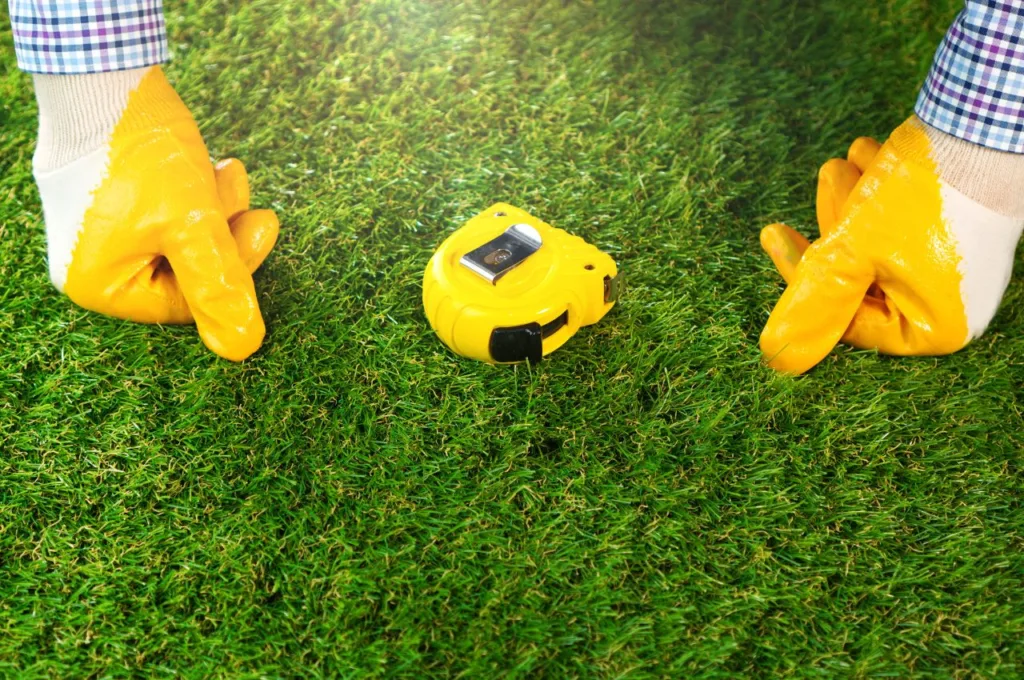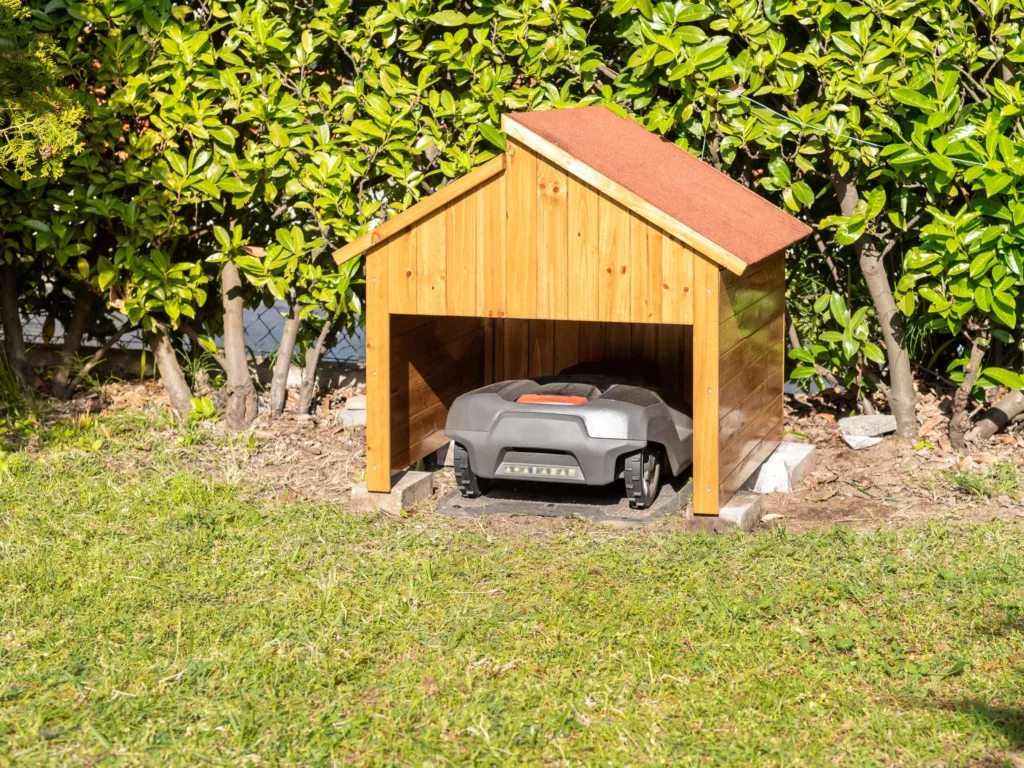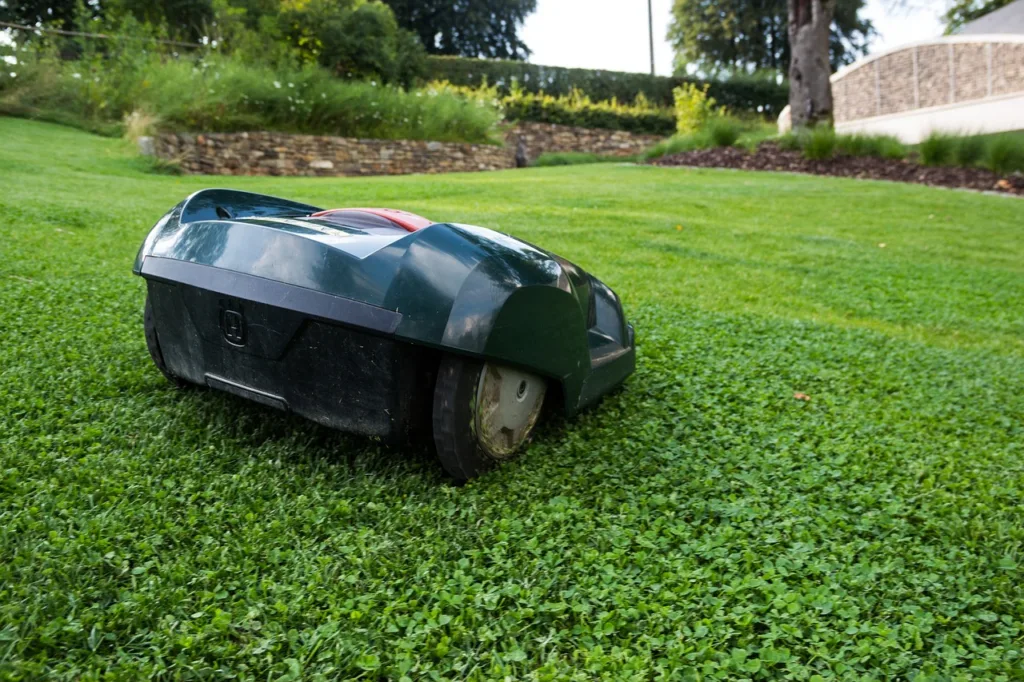Want to know how to size your robot lawn mower for the size of your lawn?
In this guide, we’ve shared three easy steps to correctly sizing your robotic mower. We’ve also discussed the importance of correctly sizing robotic lawn mowers, factors that affect a mower’s maximum area output, and more.
✅Key Takeaways:
Correctly sizing a robotic lawnmower is important to allow the mower to complete the job within a reasonable time frame, maintain a neat and well-maintained lawn, and fully utilise its smart features.
To choose the right-sized robotic lawn mower, measure your lawn size, then find a robotic lawnmower with several size choices, and choose the nearest mower size.
Some of the factors that affect a robot mower’s ability to cut a specific area size are your lawn shape, grass height, surface evenness, and any lawn obstacles.
Table of Contents
🤷♂️ Why Is Correctly Sizing A Robot Lawn Mower Important?
Robot mowers work by cutting your lawn within the boundary wire. It’s important to choose the right-sized mower to ensure optimal mowing performance and efficiency.
From our own experience with robot mowers, we know that using a mower that matches your lawn size can cover the entire area effectively, preventing missed spots and uneven cuts, while also minimizing battery strain and wear on components.
Essentially, if you want to get the biggest reward from your investment, make sure to buy the right-sized robot lawn mower for the task at hand.
📏 How To Choose The Right-Sized Robot Mower For Your Lawn Size: Step By Step
Here, we’ve outlined the three easy steps involved in choosing the right-sized robot mower for your lawn size.
1️⃣ Step 1: Calculate Your Lawn Size
Start by calculating the size of your lawn.
The easiest way to do this is with a tape measure, using this basic calculation to work out your lawn size in metres squared:
Area (m²) = Length (m) × Width (m).
You can use our lawn size calculator if you want to quickly determine your lawn size, or if you’re looking for additional handy info on sizing a lawn.
Don’t have time to calculate your lawn? We recommend doing so before you start shopping for a robotic lawnmower, but in the meantime, check out this guide to the average lawn size in the UK.
2️⃣ Step 2: Find A Robotic Mower With Several Size Choices
Next, do a search for robot lawn mowers and find manufacturers that sell a variety of different mower sizes.
If you haven’t yet started with research, our guide to the best robotic lawn mowers should set you off on the right foot.
3️⃣ Step 3: Choose The Nearest Mower Size (Size Up Slightly)
Now, choose a mower that has the closest area output to your lawn size.
It’s always best to choose the next size up rather than choosing a robotic mower that’s intended for a slightly smaller lawn. That means you’ll be covered if there are any factors that affect mowing efficiency, such as obstacles on your lawn, areas of longer or thicker grass, and hills or bumps.
So, if your lawn size is 225 m², choose a robotic lawnmower with an area output of 250m².

🤔
What Robot Mower Sizes Are Available?
There are several different sizes (measured by the mower’s maximum area output) available for most robotic mowers. The exact number of sizes and configurations depends on the manufacturer and the mower model in question.
Based on our own research of the current market, a robot lawn mower may be available for the following lawn sizes:
100 m²
150 m²
200 m²
250 m²
300 m²
400 m²
500 m²
600 m²
700 m²
800 m²
900 m²
1,000 m²
1,500 m²
1,250 m²
1,500 m²
2,000 m²
Note that the market is consistently changing for robotic mowers. It’s likely that as these mowers become more widely available, there will be a greater range of size options to choose from, especially for larger lawns.
⏰ How Many Hours Can A Robot Lawn Mower Mow For?
The average number of hours that a robot lawn mower can mow for is 3-6 hours. Some robotic mowers have larger, more powerful motors and can mow for as long as 12-24 hours, but most mowers will need regular breaks to recharge.
Generally, robotic mowers are designed to operate for a certain duration on a single battery charge before they need to return to their charging station. The amount of time that a robotic lawnmower can mow for depends on its battery size and its area output (i.e. the lawn size it’s designed for).

✂️ What Affects A Robot Mower’s Ability To Cut A Specific Area Size?
The area size that a robotic mower is designed to cut is predominantly based on the mower’s battery power. The larger and more powerful the battery, the longer the mower can run, and the more efficiently and quickly the mower can cut a larger area.
Cutting width may also play a role – robot mowers for larger lawns are often slightly wider than those for smaller lawns.
There are a few factors, beyond the features of the robotic mower itself, that determine the mower’s ability to cut the space it’s specified for. These include:
📐 Grass Height
The longer the grass, the more battery power will be needed for a robotic lawn mower to cover the area. So, a robot lawn mower will cut your lawn space more efficiently if your grass is at an optimal height of around 4-6cm.
🟩 Lawn Shape
Robot mowers are fastest and most efficient when mowing rectangular lawns. If you have an unusual lawn shape, the mower will take longer to cut the area, which may affect its ability to mow your entire space.
🏞 Surface Evenness
Even surfaces are best for a robotic mower to traverse because they don’t create extra resistance or put a strain on the battery. So, if your lawn is even and flat, a robot lawn mower should cut your lawn more efficiently than if your lawn is bumpy or has a lot of slopes.
🥅 Lawn Obstacles
Obstacles on your lawn, such as flower beds and lawn furniture, will add extra minutes to a robot mower’s mowing time because it has to take the less efficient paths when navigating your lawn. The more obstacles your mower needs to dodge, the longer the overall cutting time – and this will reduce the mower’s ability to efficiently mow your space.
A robot mower’s estimated cutting area is calculated with absolutely optimal conditions in mind. So, if the mower is used on a flat, square lawn with relatively short grass and few obstacles, it should be able to efficiently cut the space as specified. If any of these factors are inadequate, the mower may have to cut your lawn in several rounds, with one or two recharge sessions in between.
Read More: Pros And Cons Of Robot Mowers

🤏 What Happens If You Undersize A Robot Mower For Your Lawn Size?
If you undersize a robotic mower for your lawn size (i.e. you buy a mower that has an insufficient area output for your situation), the mower won’t be able to mow your entire lawn in a single session.
This means the mower will cut your lawn in random patterns (as is the norm with robotic mowers), then it’ll travel back to its charging port for a recharge without completely finishing the job. As a result, you’ll be left with an unevenly cut lawn, which will stay that way until the mower is charged and ready to head out again.
Smaller robot mowers also might not have the energy efficiency needed for larger lawns. Using a mower that’s not designed to handle your lawn size will drain the batteries quickly and require more frequent recharging, leading to higher energy consumption and costs.
We don’t recommend undersizing your robotic mower just to save money – the mower’s area performance will be hindered, and you won’t get the best use out of your investment. Take our word for it!
🏁 Final Word
Thanks for taking the time to read this article! Hopefully, you now know all the key information for correctly sizing a robot lawn mower for your garden size.
If in doubt, contact the manufacturer. They should be happy to discuss your specific situation and help you to decide on the optimal mower maximum area output for your needs.
FAQ
How big a lawn can a robot mower cut?
Robot lawn mowers can mow lawns up to 2,000 meters squared (m²). However, not all mowers are designed for the same lawn sizes. The standard cutting area for a robotic mower is 150-500 m². There are a few larger robot lawn mowers that can mow larger lawns, like the WORX Landroid L WR155E (<Amazon link), which can mow a 2,000m² space. As expected, these mowers are pretty expensive.
Can a robot lawn mower cut 2 acres?
Yes, there are a few robot lawn mowers that can cut lawns up to 2 acres in size. However, generally, a robotic mower is intended for cutting smaller lawns. Some mowers (like the WORX Landroid mower we shared above) are powerful enough to mow 2 acres, split into four half-acre sessions, but very few robot mowers have enough battery power to mow an entire 2-acre lawn consistently from start to finish.
How big are robot mowers?
Robotic mowers have a cutting width of about 16-22cm and measure around 55x 50x 30cm (L x W x H) depending on the mower’s intended area output. A robot mower is narrower than a conventional push mower, which has an average cutting width of at least 30cm.
How do I find out what sized lawn a robot mower can cut?
You can find out what sized lawn a robotic lawnmower can cut by checking its specifications. The mower’s area output should be clearly stated (usually in m² in the UK) alongside its other key features. Most manufacturers sell the same mower in several different configurations for different lawn sizes.
